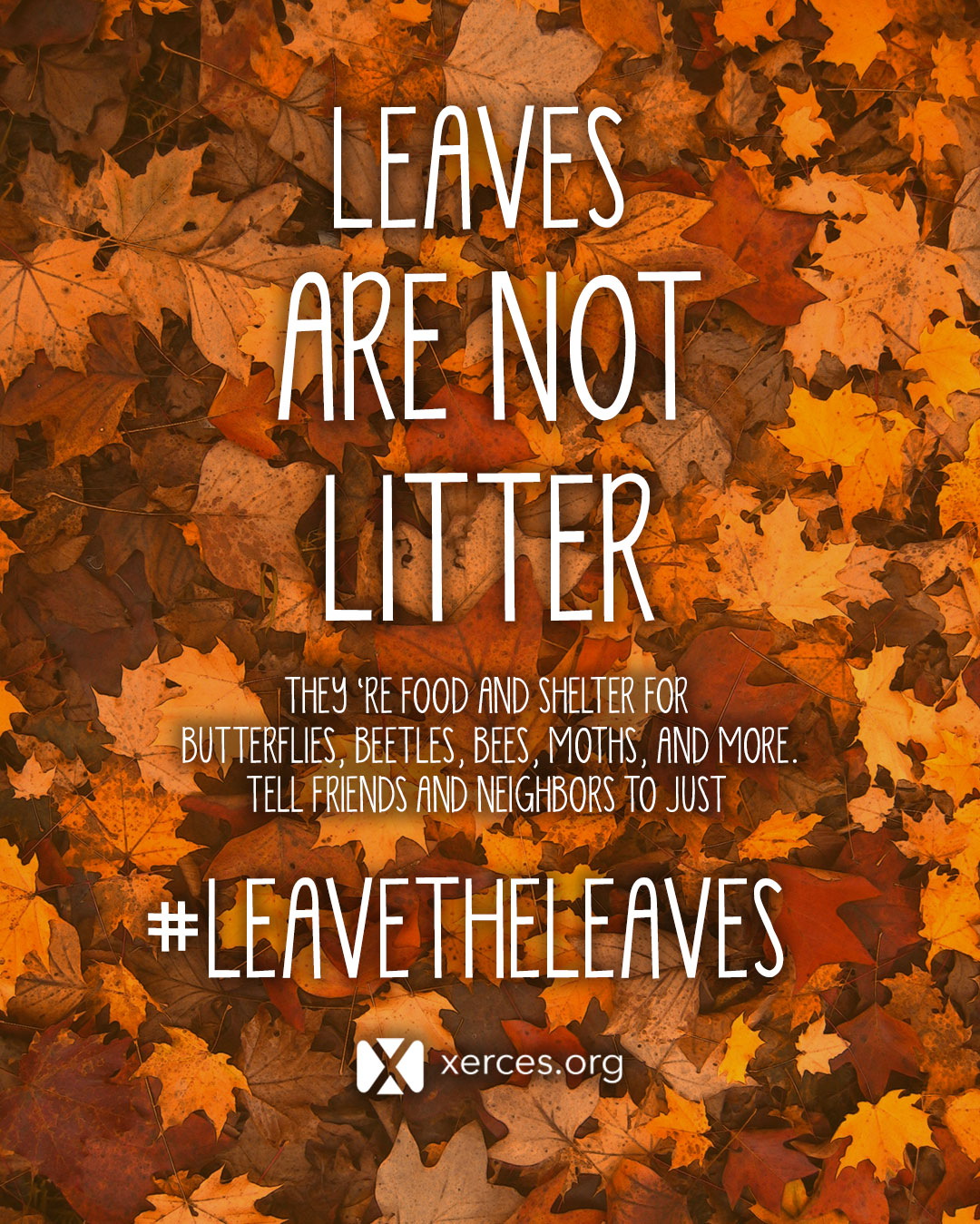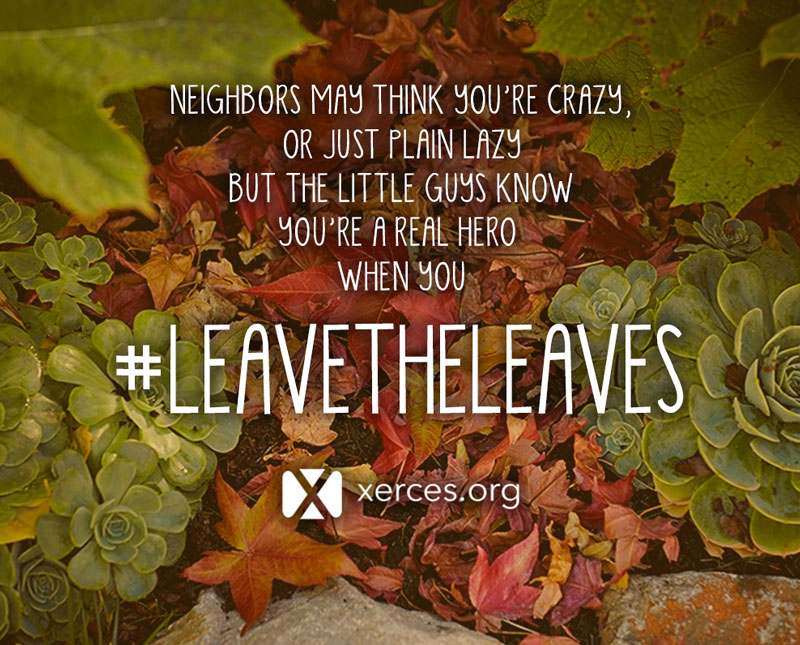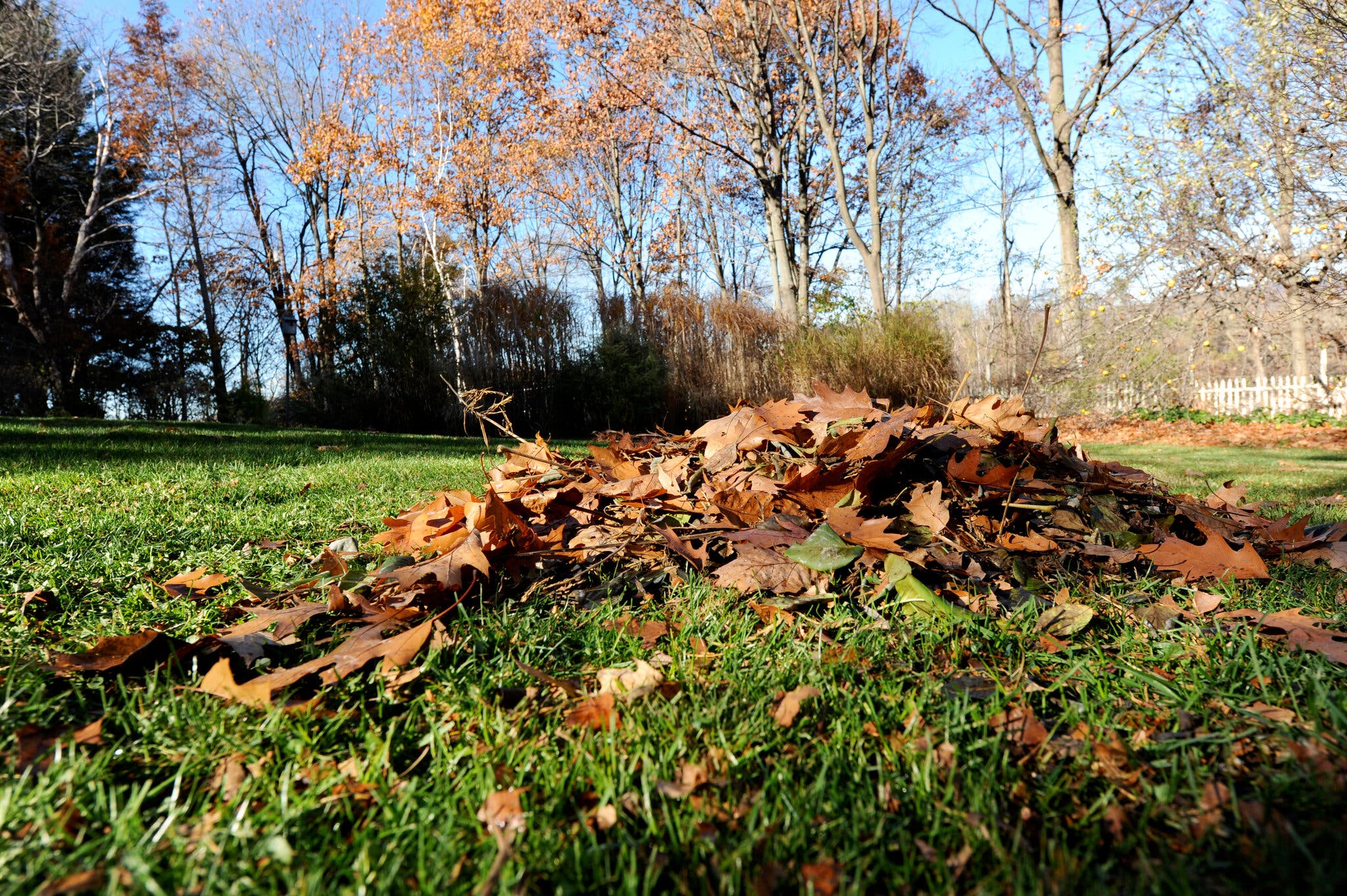Leave the Leaves!
Leaving the Leaves is quieter and cleaner than gas powered leaf blowing
Leaf blowers might be the easy way to clean up during routine maintenance, but they also damage soil through erosion and compaction, and create significant air and noise pollution. Gas powered leaf blowers put out pollutants such as ozone, carbon monoxide, nitrogen oxides and hydrocarbons. They also disburse airborne particles that aggravate asthma and other respiratory problems.
- Debris, fertilizers, pesticides and herbicides and other foreign material like animal feces blown into the street often end up in storm drains and into our water supply.
- Leaves blown into the street clog storm drains causing flooding and erosion.
If you use a leaf blower, consider going electric. For information about switching from gas to electric-powered landscaping tools, including leaf blowers, visit the Lake Oswego Sustainability Network, Electrify Now, QuietCleanPDX, and American Green Zone Alliance.
For scientific resources on leaf blowers and air quality, health, climate change, and ecosystems visit www.healthyyards.org/all-about-leaf-blowers/, Electrify Now’s electric yard tool factsheet, and the other organizations listed above.
The richness of Lake Oswego’s urban tree canopy is striking year-round, but even more evident in Autumn when the foliage shifts into fiery golds, oranges and reds. For many of us, the annual ritual of our deciduous trees shedding their leaves each year (a process called “abscission”) is a charming marker of transition into a quieter winter season. However this quiet ritual is often interrupted by the crescendo of leaf blowers as we rush to tidy our landscapes and deal with the leaves that have coated our grass and gardens.
When we stop to think about it… why do we undergo the tedious process of raking, blowing and bagging the leaves each year? Is it social pressure to maintain manicured landscapes? Is it because we fear the leaves will kill our grass or become a host to pests?
We want to tackle these concerns and misconceptions, and propose leaving the leaves on your landscape to foster healthier soil and habitats for urban wildlife.
Let’s be a little messier and ditch the gas powered leaf blower
A good urban forest steward will occasionally step back and reflect on why we care for landscapes a certain way with certain set procedures. One of the main goals of the OLWC Neighborhood Urban Forest Committees is to address horticulture myths and examine the status quo of garden aesthetics, so that we can provide each other resources to make responsible garden maintenance decisions that acknowledge ecological health factors alongside personal landscaping goals.
Instead of removing the leaves that fall on their property members of our Urban Forest Committees are repurposing them for invertebrate habitat and mulching materials.
Many invertebrate conservationists and horticulture specialists are recommending keeping the fallen leaves on your property and letting your leaves form a natural mulch.
If you think about how a forest functions, “leaving the leaves” makes sense. The annual forest leaf drop replenishes soil with nutrients and creates habitat for beneficial overwintering insects. Sure, most residential gardens don’t share the size or complexity of forests but they follow similar processes. Fallen leaves insulate the soil which helps burrowing insects withstand fluctuating temperatures, provide winter mulch for perennials susceptible to frost, and help build soil by recycling nutrients back into the ground.
From a sociological perspective, we rake because no one wants to be the neighbor with the messy garden, but ecologically speaking, the benefits of a little mess outweigh the merits of a meticulous yard. If we arm ourselves with leaf blowers and aim to rid our yards of debris and diversity, we risk making a place that’s too sterilized for the good of its inhabitants.
Leave The Leaves To Benefit Wildlife
The traditional annual garden leaf cleanup is a bit of an unintentional bait and switch. We work so hard year round to grow and maintain gardens that support pollinators only to sweep away their winter hideouts in the fall.
A study conducted by Smithsonian Environmental Research Center last year, describes why removing leaf litter is harmful to overwintering suburban insect communities. Disturbing leaf litter interrupts soil’s ability to buffer temperature changes which can be lethal to insects like ground nesting bees or other anthropoids that provide pollination services. They found that removing leaves had a negative impact on Lepidoptera (butterflies and moths) emergence but had no impact on parasitoids.
Xerces Society, a local invertebrate conservation organization and a huge supporter of leaving your leaves, explains how the vast majority of butterflies and moths don’t migrate during the winter, but utilize leaf piles for cover.
In addition to pollinator species, there are many other species that live in leaves. Spiders, snails, worms, beetles, millipedes, and more… species that are a source of food for animals like birds and amphibians. Detritivores like millipedes recycle plant debris and spiders offer extensive pest control to our natural areas.
Leave the Leaves to Serve your Soil
Nature builds soil this way… maybe we should too.
Trees shedding their leaves is part of nature’s fertility and recycling of important nutrients. By removing fallen leaves year after year, we are depleting this natural source of nutrients and soil, and resorting to fertilizers or compost to make our lawns green and our garden growing robustly again.
One of the 5 Principles of Healthy Soil is to Maximize Soil Cover.
Mulch is any material that covers the soil’s surface to moderate its environment and enhance the landscape. Leaf mulch fortifies soil by breaking down into it, with the added benefit of easier access to invertebrates where other mulches like heavy wood chips would deter them.
When leaves hit the ground, invertebrates that live in the soil shred plant materials into smaller and smaller pieces. (Nature does all the work!) Then soil fungi sends out hyphae to release acids and enzymes necessary to break down dead plant material and makes nutrients available to plants to sustain their own growth. As the leaves are consumed by the decomposer food web, water, nitrogen and organic carbon is released into the soil, providing nutrients for the microbial communities and improving the structure of the soil.
In addition to the nutrition leaves provide, leaves also act as a good mulch for moisture retention and work against invasive seed germination.
Drop, decompose, absorb, repeat.



Northwestern Salamander, Ambystoma gracile
Though common in Oregon, adult salamanders are rarely seen because they live underground.
Your content goes here. Edit or remove this text inline or in the module Content settings. You can also style every aspect of this content in the module Design settings and even apply custom CSS to this text in the module Advanced settings.

Put Your Leaves to Work
A thin layer of leaves can actually help the health of your grass and you can also move leaves to other places in your yard that will aid the health of the soil and benefit wildlife.
- Consider raking leaves into areas around trees, or use them as winter mulch to cover garden beds. To protect dry leaves from getting scattered by the wind, place some light mulch or branches over them.
- You can repurpose leaves that fall along walkways and other high-traffic spots where slick leaf buildup could pose a safety issue.
- Shredding? Many organic gardeners opt for shredding their fall leaves for use in compost piles. While this does not affect the nutrients deposited in the soil and is more environmentally friendly than simply blowing them away or bagging them and sending them to a landfill—shredded leaves will not provide the same cover for overwintering insects. Xerces Society recommends leaving your leaves whole.
- Make compost: Combine fallen leaves with grass clippings and other plant material and keep moist and well mixed. You’ll have nutrient-rich compost to add to your garden next spring.
- Still too many leaves? Share them with neighbors, friends, schools and others.

“I love this time of year with our deciduous trees turning marvelous colors and leaves drifting in the breeze. My idea about how I deal with those leaves has certainly shifted over the years. When we first moved into our home 41 years ago I would spend hours gathering up every leave and putting them in bags to be hauled away. I can still remember the scratches on my arms from reaching into the azaleas to get every fallen tree leaf. As well as the effort of raking them from the lawn. Then I started working in the woods at Tryon Creek State Natural Area. Each year I would watch the leaves come down and cover everything. The rangers would blow the leaves off of the parking lot and paved trails into the forest. The rains would come and these leaves would form a carpet that provided habitat for wintering invertebrates. As the season progressed the leaves began to disintegrate and form a natural layer of compost. As spring came dormant plants began poking up through the leaf layer and worm mounds showed that the earth worms were pulling bits of leaves underground. Now the leaves were helping to bring nutrients back to the soil and to the plants as the cycle of life was renewed.
It finally hit me that I could treat my yard at home the same way. I stopped removing leaves from my garden beds and allowed the wind to blow leaves off the lawn into those beds. I swept leaves off of the patio and walks into the flowerbeds. I used a mulching mower to cut up the leaves and leave them in place on the lawn. All of the leaves stayed in my yard which allowed the nutrients they contained to return to the soil and nourish my plants. It was certainly a lot less work! And my yard flourished! We have a lot to learn from observing natural processes and trusting nature.”
—Stephanie Wagner, OLWC Board Chair on how she uses the “Leave the Leaves” method for her garden’s specific needs
Talk to your landscapers and neighbors!
Worried your neighbors secretly think you’re a lazy gardener? The same neighbors will see the impacts leaving your leaves will have on your landscape in the form of plant diversity and abundance of pollinators. Consider having a conversation with them about your goals and encourage them to try out leaving their own leaves!
We also have “Leave the Leaves” signs we can provide you to stake in your front yard. Email jack@oswegowatershed.org to request one or donate to Xerces Society to receive one in the mail!
Do you use a landscape company to help you with your yard work? Have a conversation with them and explain that you’d like to experiment with leaving the leaves in place this fall to see how it affects the quality of your soil and backyard wildlife
Join your local Neighborhood Urban Forest Committee!
The idea behind incorporating a “Leave the Leaves” campaign in Lake Oswego arose from these committees. We meet monthly to discuss natural resource issues and we’d love to have you! Reach out to jack@oswegowatershed.org to find out your local neighborhood’s committee representative.

Additional Resources
Xerces Society – Leaves are not litter!
Tualatin Soil Water Conservation District –Improve Soil Health and Habitat by Leaving Leaf Litter
Oregon State University Master Gardener Extension Service – Should You Leave Your Leaves? How autumn yard maintenance affects overwintering insects
